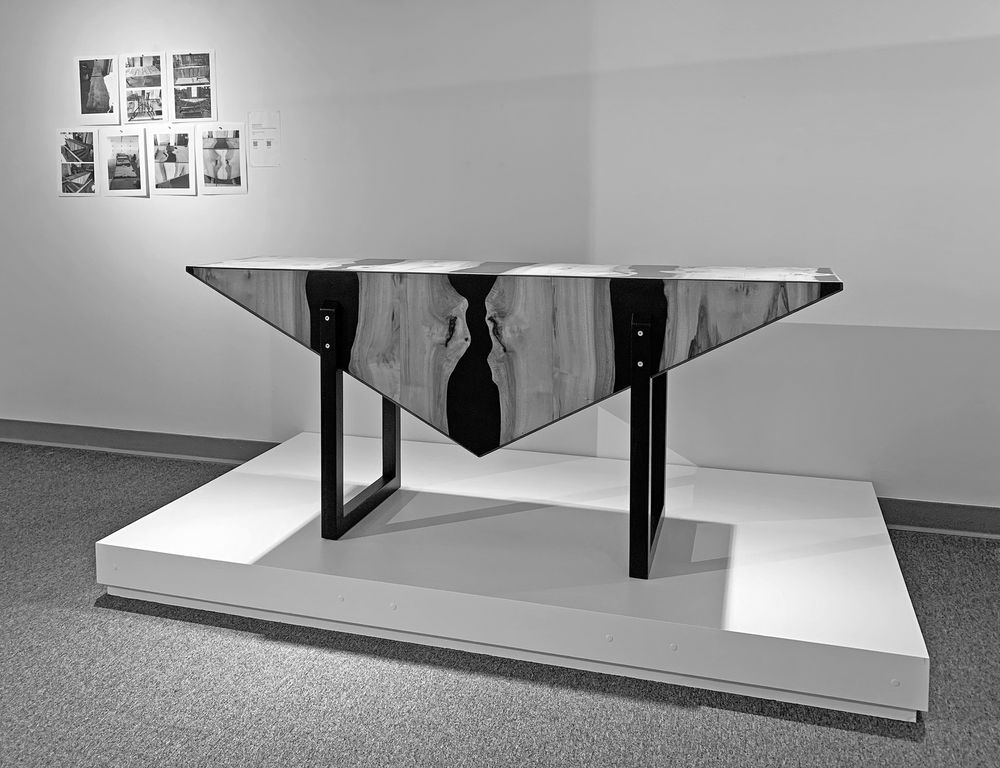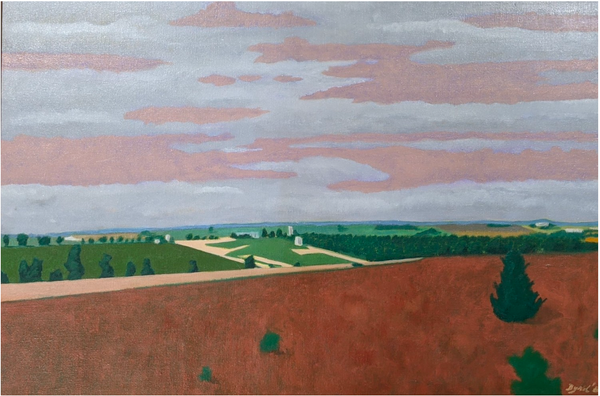“Made to Order” at the Trout Museum of Art
by Carol Emmons
Visual artists are popularly pictured as loners who starve in garrets—or their inverse, celebrities with profligate lives. If nothing else, these constructions have provided an abundance of lurid literature and cinema. While making a living as an artist is in fact difficult, these romantic depictions are deceptive. Far more accurate is Lucy Lippard’s model of artists as “cultural workers.”
To survive as an artist requires good work habits and business sense—qualities at odds with the sensational stereotype. The reality is that cultural workers—like all workers—contribute to the economy and need to go to the doctor, feed their children, and fix their leaking roof. The U.S. Bureau of Economic Affairs (BEA) with the National Endowment for the Arts (NEA) recently reported that the arts contributed over $877 billion to the U.S. economy—including $10.1 billion and over 96,000 jobs in Wisconsin, more jobs than the state’s beer and papermaking industries combined.
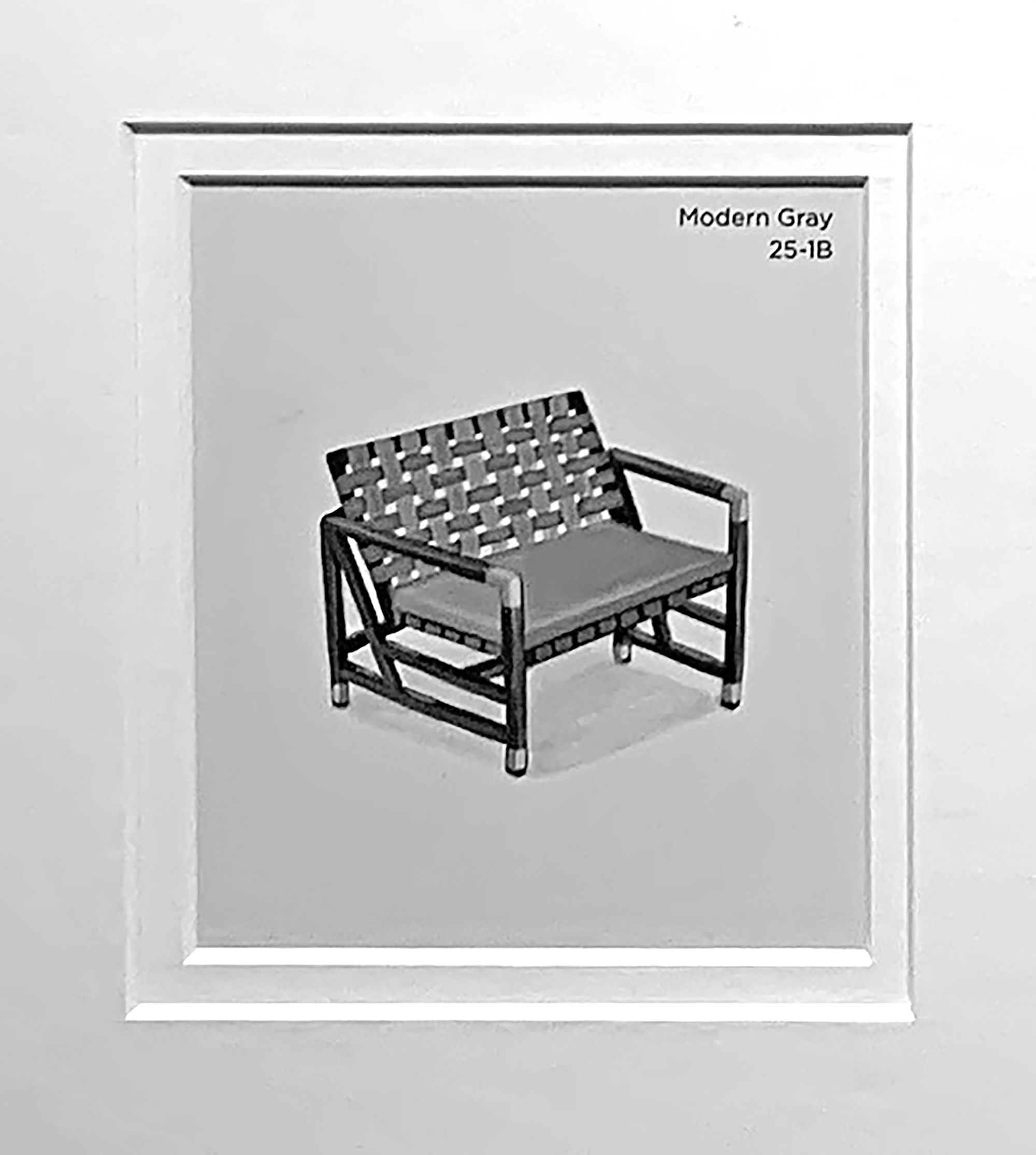
So how does visual art get made? The Trout Museum of Art in Appleton has set out to demystify aspects of art world production and simultaneously generate support for both the Museum and regional artists. Their project “connects commissioners (buyers) with artists to create one-of-a-kind, customized works of art.” The resultant exhibit features over fifty pieces and raised over $65,000, split evenly between the artists and the Museum. (Typically, commercial galleries take 50% commissions, and artists are not paid for exhibiting.) An online auction raised an additional $12,000.
This endeavor is especially welcome now, with COVID-19 resulting in a $13.1 billion loss for arts non-profits nationwide ($38.6 million in Wisconsin), and over two- thirds of U.S. independent creative workers unemployed.2 The Rand Corporation reports “The Pandemic is a Disaster for Artists” and the Director of the League of Chicago Theatres says, “We are looking at the decimation of an industry.” The TMA project thus not only publicizes work by artists but attempts to help them subsist.
This entailed a call for both artists and collectors, with commissioners indicating their preferred style, color, size, etc. Having buyers dictate choices to the artist might rankle, yet this practice is long-standing—think of all those church frescoes in Europe. Furthermore, any artists working for survival are under pressure to produce work that sells and to stick with what’s proved popular.
The resulting exhibition succeeds remarkably well. The work is somewhat uneven, but there are diverse approaches represented. In painting alone, these range from the realisms of Kathryn Wedge and Kevin Foote to the abstractions of Jesse Bell and Ginnie Cappaert to the formalism of Amy Carani and Daniel Klewer. In many cases artists produced multiple pieces, encouraging consideration of which commissions generated the most effective art.
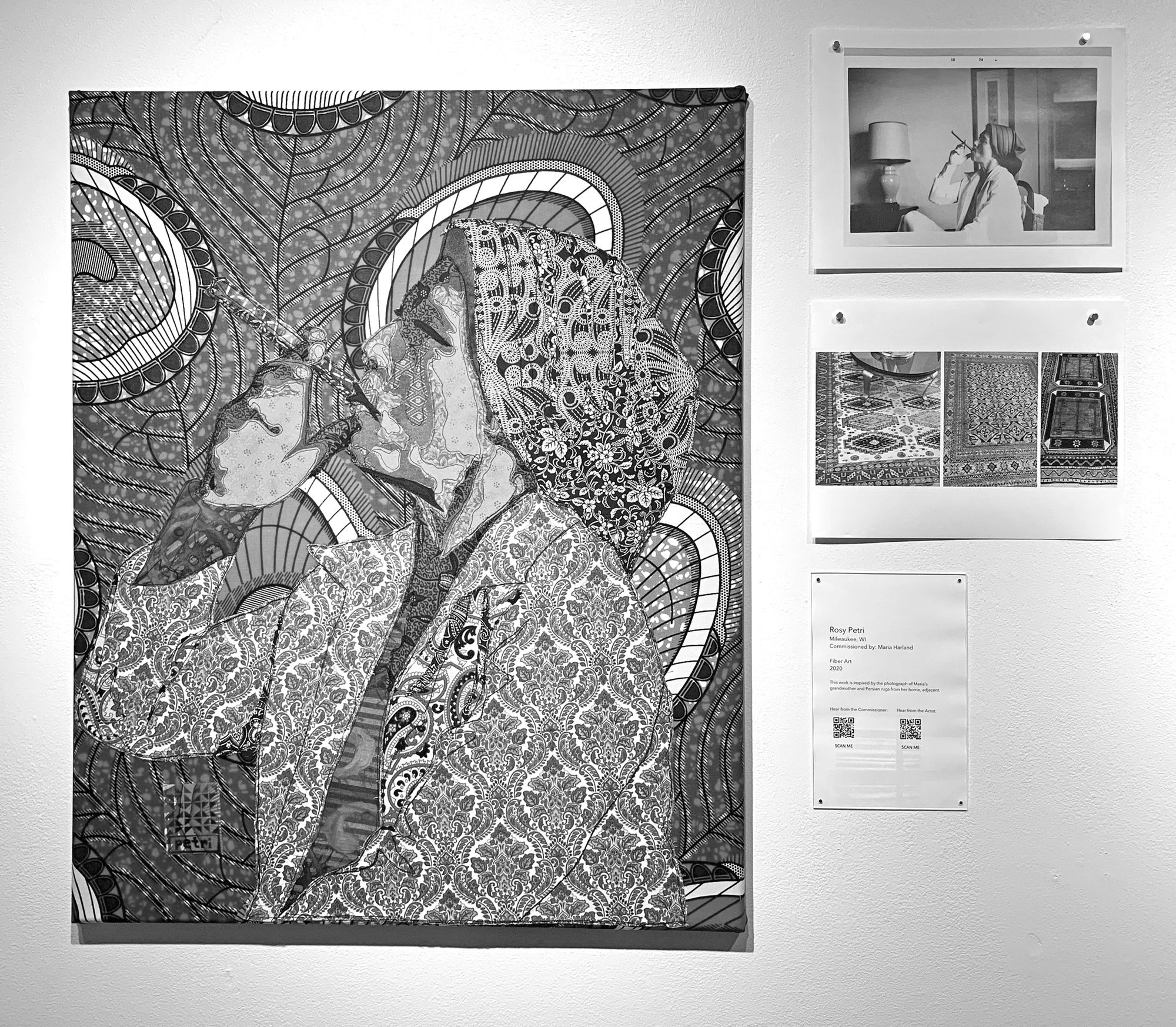
The results here are markedly positive. For example, chairs are usually scarce in Lydia Andersen’s tiny paint chip works (using a color’s name to suggest its delicately rendered subject), but in her series for Lindsey Rossmeissl (with colors like “Brushed Cotton” or “Modern Gray”), she transcends literal illustration to produce a wonderful essay on design style as personality.
The Trout’s efforts to clarify art production include first-rate explanatory panels on commissioning and the art-making process, an interactive opportunity to create a drawing via chance, and documentation of the coming-into-being of the art on display. This information includes photographs, videos, and QR codes that can be scanned to hear brief statements from artists and buyers. The codes provide a participatory element and lend deeper insights without cluttering the wall. For example, learning that Rosy Petri’s fiber piece for Maria Harland represents Harland’s grandmother and her Persian rugs adds depth and poignance to an already compelling work. In her clip, Harland states that the process “... made the final piece feel so personal and meaningful and beautiful to us.”
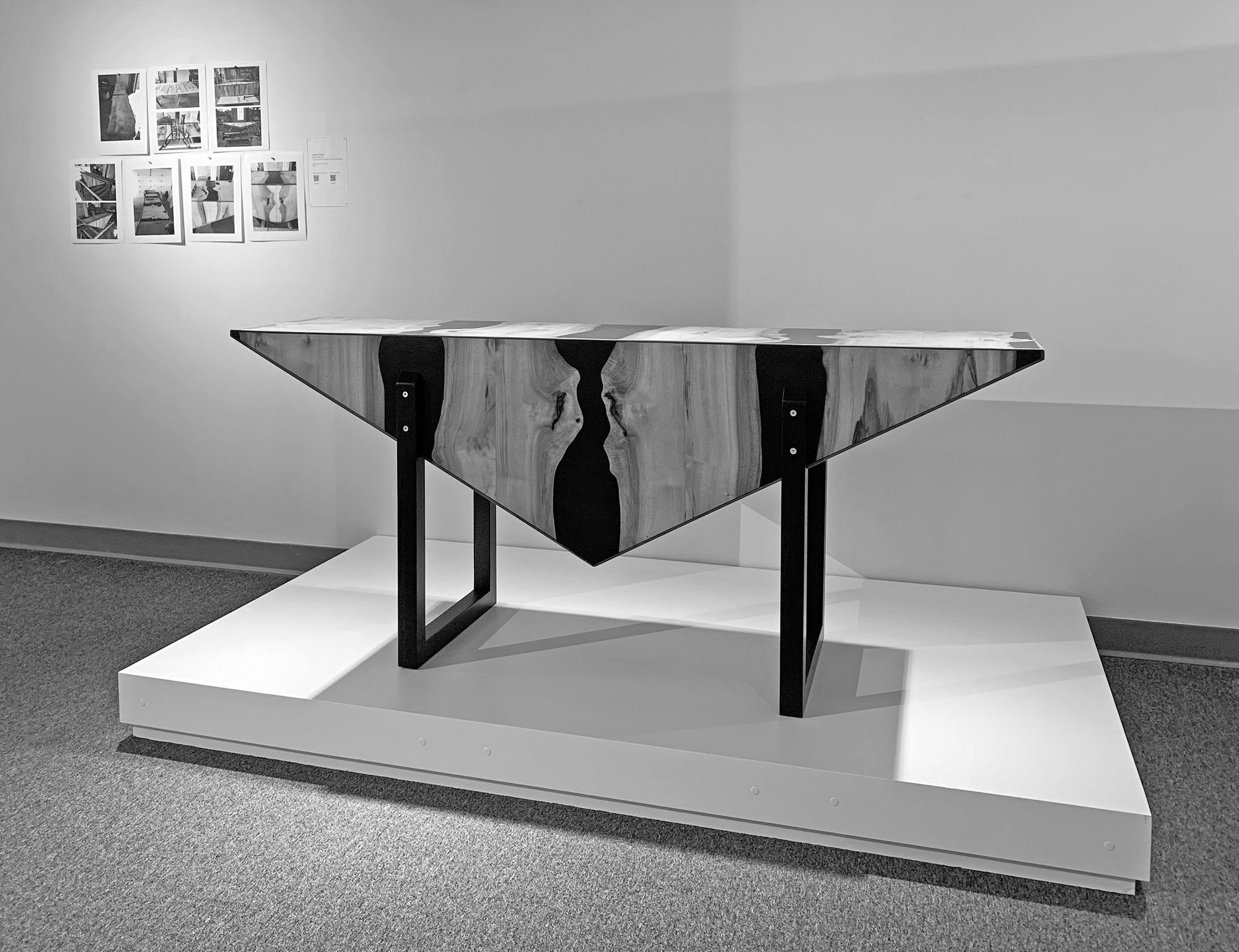
Similarly, documentation of Nathan Hatch’s table describes its construction, noting that its black elements remind him of Rorschach ink blots. This bridge between formal elements and the broader world invests the work with added resonance. Michelle Richeson’s oil painting is accompanied by a source photo and audio comments from commissioner Beth Flaherty: “You really do feel like you’re part of the creative process ... .” Particularly fascinating is that Richeson’s painting is largely unfinished, revealing her working process and reminding us of the time often invested in creating. In parallel fashion, Ryan Klassa shares a video detailing the edits of his photograph “What Lies Behind.”
Why commission a work of art? Joseph Kosuth reminds us that “When someone ‘buys’ a Flavin [Dan Flavin, known for minimal fluorescent tube art] he isn’t buyinga light show, for if he was he could just go to a hardware store and get the goods for considerably less. He isn’t ‘buying’ anything. He is subsidizing Flavin’s activity as an artist.” This is an important but perhaps less tangible aspect of “Made to Order”: while buyers will end up with a product, and artists will be able to buy some groceries, the overarching impact of the project is an ongoing commitment to the worth of art-making and collecting—not merely as commodity, trendy hobby, or economic engine, but as a diverse and essential way of engaging the world. The elements of the TMA endeavor work to establish a connection between artist and audience, and especially through the buyers’ commentaries it is evident how powerfully commissioning provides an entrée into a work of art, making art and the art world both less intimidating and more rewarding.
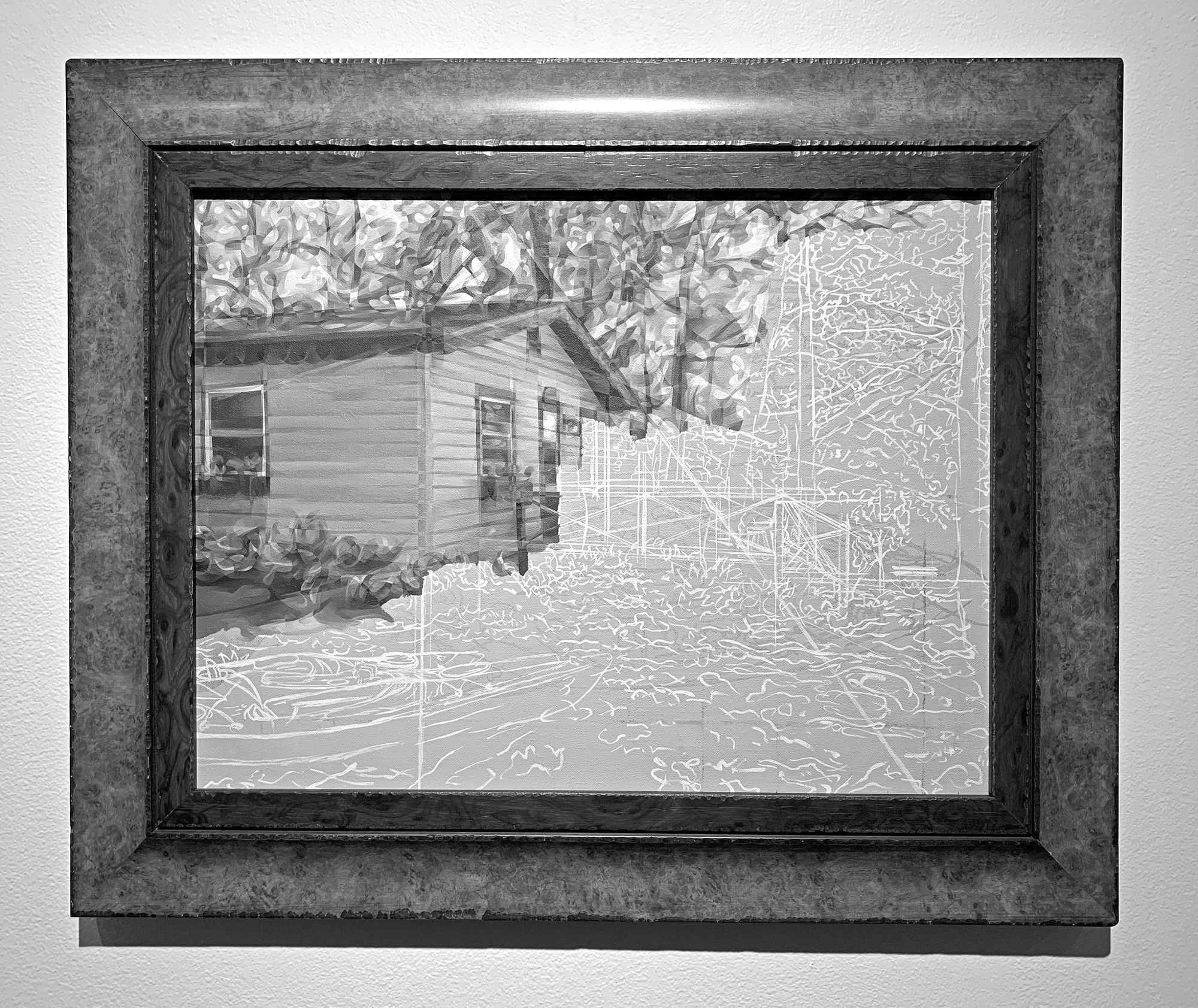
Made To Order
Trout Museum of Art (Appleton, Wisconsin)troutmuseum.org/event/made-to-order/
September 1, 2020 - November 1, 2020
The Museum is also offering talks about pricing/selling artwork and the artistic process; see the website for details.
Endnotes
1 Lippard, Lucy R. Get the Message?: A Decade of Art for Social Change. E.P. Dutton, 1984.
2 Arts Wisconsin. “Arts Action Center/Facts and Figures.” www. artswisconsin.org/actioncenter/facts-and-figures/ [accessed 9/21/2020].
3 Americans for the Arts. “The Economic Impact of Coronavirus on the Arts and Culture Sector.” www.americansforthearts.org/by-topic/disaster-preparedness/ the-economic-impact-of-coronavirus-on-the-arts-and-culture-sector [accessed 9/21/2020]; Capellaro, Catherine. “Existential Threat.” Isthmus (Madison, Wisconsin). 7 August 2020. [accessed 9/21/2020].
4 Marone, James V., et.al. “The Pandemic is a Disaster for Artists.” The Rand Blog, 4 August 2020, www.rand.org/blog/2020/07/the-pandemic-is-a-disaster-for- artists.html.
5 Jones, Chris. “Artistic Chicago is hemorrhaging jobs: ‘We are looking at the decimation of an industry.’” Chicago Tribune 16 July 2020. (quote from Deb Clapp, executive director of the League of Chicago Theatres) www.chicagotribune.com/ entertainment/theater/chris-jones/ct-ent-chicago-arts-jobs-jones-0719-20200716- m2ytzeh555dqbgtxyjh75e6eke-story.html.
6 Kosuth, Joseph. “Art After Philosophy.” Art after Philosophy and After. MIT Press, 1991, p. 32.

